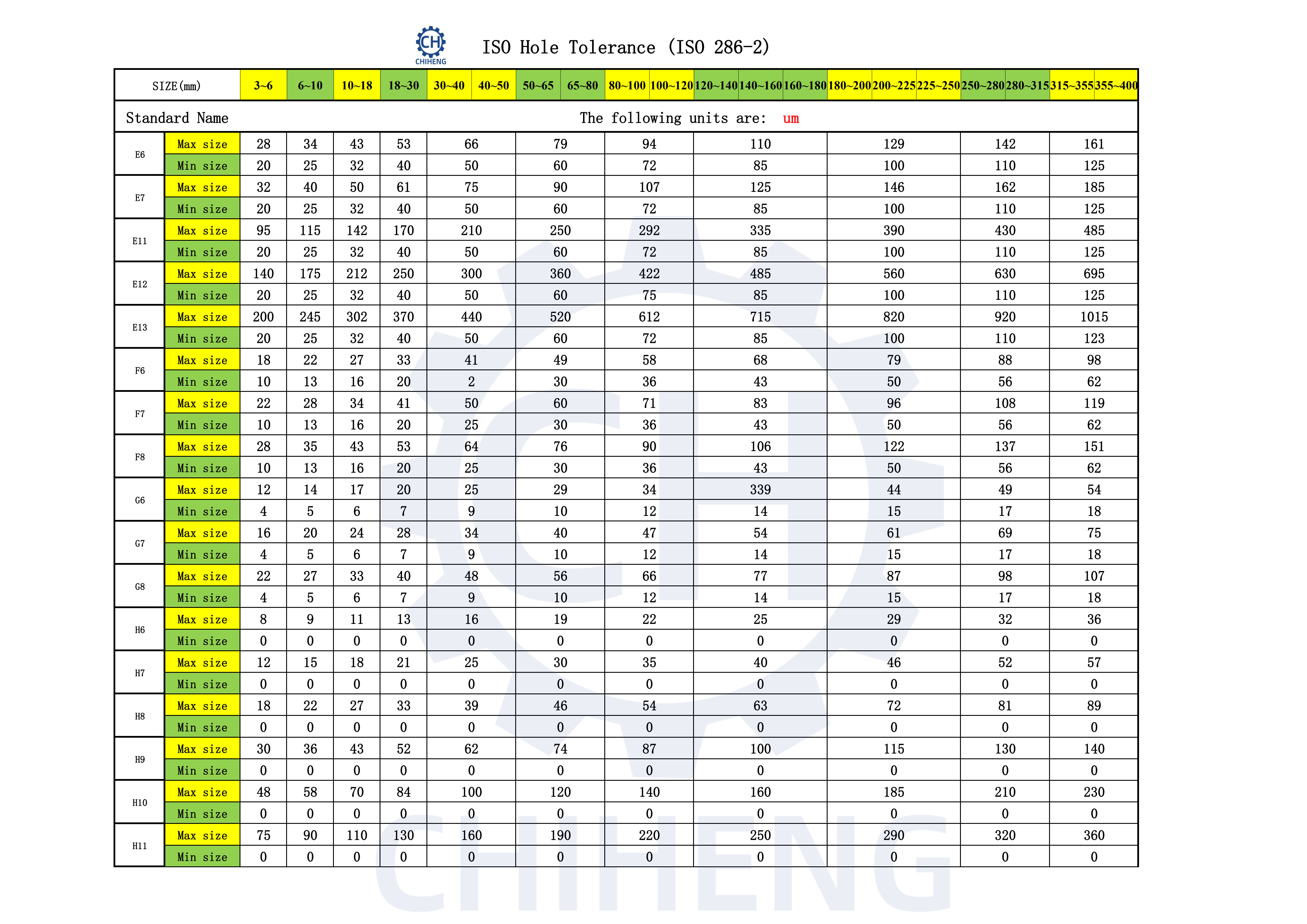Hole Tolerances - ISO 286-2 Standard
Hole Tolerances in Components: A Key Element in Precision Engineering with ISO 286-2 Standard
In the modern field of engineering, the manufacturing of components has reached a level that demands high precision and reliability. Among the crucial concepts in component manufacturing, hole tolerances play a pivotal role. Hole tolerances determine the assembly performance, functionality, and lifespan of components. This article delves into the definition and significance of hole tolerances while introducing the ISO 286-2 standard, a globally adopted specification for hole tolerances.

One. Definition of Hole TolerancesTwo. ISO 286-2 Standard
Hole tolerances refer to the allowable variation in size and shape of holes within components. It typically includes upper and lower size limits as well as shape tolerances. The choice of hole tolerances depends on the design requirements and intended functionality of the component. ISO 286-2 standard provides a common set of hole tolerance specifications for engineers worldwide, ensuring international consistency and interchangeability.
Two. ISO 286-2 Standard
ISO 286-2 is a standard published by the International Organization for Standardization (ISO) that outlines the principles for establishing and utilizing standard hole tolerances. This standard encompasses various hole tolerance grades suitable for different application needs. Here are some key points from ISO 286-2:
ISO Hole Tolerance (ISO 286-2) —— Download
1. Hole Tolerance Grades: ISO 286-2 defines four distinct hole tolerance grades: H7, H8, H9, and H11, with H7 being the most commonly used. These grades are applicable to general engineering applications, covering common tolerance requirements.
2. Basic Size System: ISO 286-2 adopts a basic size system to ensure consistency in hole tolerances. This system is based on standard sizes for basic holes, and the tolerance grades are determined by modifying upper and lower tolerance limits accordingly.
3. Specific Applications: Engineers can select the appropriate hole tolerance grade based on the specific requirements of their applications. Higher grades (such as H7) are suitable for applications demanding high assembly precision, while lower grades (such as H11) are adequate for general-purpose use.
Three. Importance of Hole Tolerances
1. Assembly Performance: The choice of hole tolerances directly impacts the assembly performance of components. Proper hole tolerances ensure secure connections between parts while avoiding excessive tightening or loosening during assembly.
2. Functionality: Holes in components are often used for bearings, bolts, and pins, among other connecting elements. Accurate control of hole tolerances guarantees the reliability and performance of these connecting elements.
3. Lifespan: Hole tolerances also influence the lifespan of components. Appropriate hole tolerances can reduce wear and fatigue in components during use, thereby extending their operational life.








